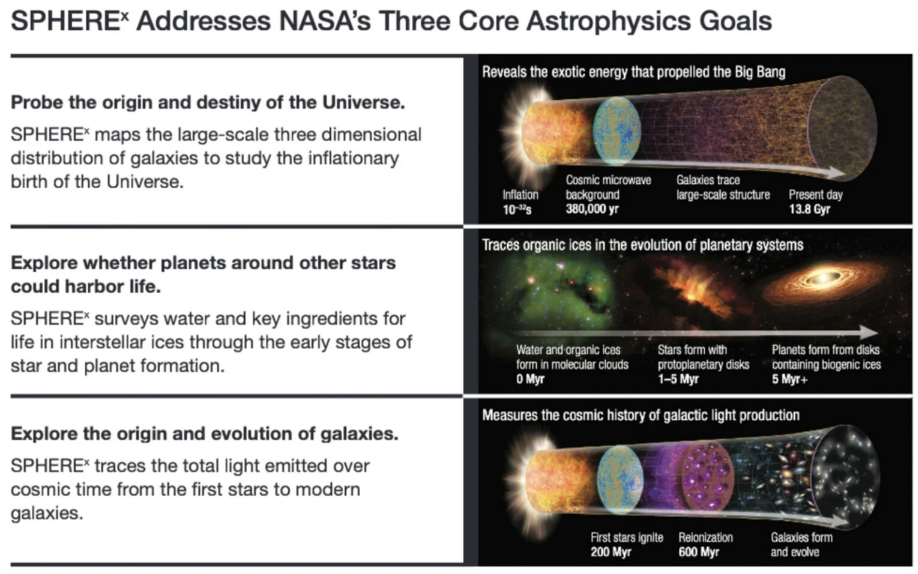NASA’s SPHEREx Telescope

- 01 Mar 2025
In News:
NASA is set to launch the Spectro-Photometer for the History of the Universe, Epoch of Reionization, and Ices Explorer (SPHEREx) aboard a SpaceX Falcon 9 rocket from Vandenberg Space Force Base, California. The telescope is megaphone-shaped, infrared-based, and is designed for a 2-year mission to scan the entire sky in infrared and optical light.
Key Details:
Mission Objectives
- Cosmic Inflation: SPHEREx will investigate the phenomenon of cosmic inflation, the ultra-rapid expansion of the universe that occurred a fraction of a second after the Big Bang (~13.8 billion years ago). By mapping the 3D positions of nearly 450 million galaxies, the mission aims to refine theories about the universe’s earliest moments.
- Spectroscopic Mapping: It will divide light into 96–102 spectral bands, creating a 3D map of the sky. It will collect 8 million spectroscopic images, allowing the study of the composition and distribution of celestial objects on an unprecedented scale.
- Biogenic Molecules Detection: The telescope will identify life-forming (biogenic) molecules like water, carbon dioxide, carbon monoxide, and methanol in cold molecular clouds of the Milky Way. These icy particles are essential for understanding the chemical preconditions for life.
- Cosmic Glow & New Phenomena: SPHEREx will also measure the collective glow from intergalactic space, which could help uncover previously unknown cosmic events and structures.
Comparison with Other Telescopes
Unlike the James Webb Space Telescope (JWST) or the Hubble Space Telescope, which focus on high-resolution, narrow field observations, SPHEREx is designed to scan the entire sky. The full-sky mapping capability makes it a complementary tool for large-scale statistical cosmology.
Significance for Astronomy and Astrobiology
- It provides a comprehensive sky census of galaxies, stars, and asteroids (around 1 billion galaxies, 100 million stars, and 10,000 asteroids).
- By locating regions rich in life-bearing molecules, it enhances our understanding of how life-essential chemistry emerges in the galaxy.
- It lays the groundwork for future targeted studies of exoplanets and habitable environments in space.
